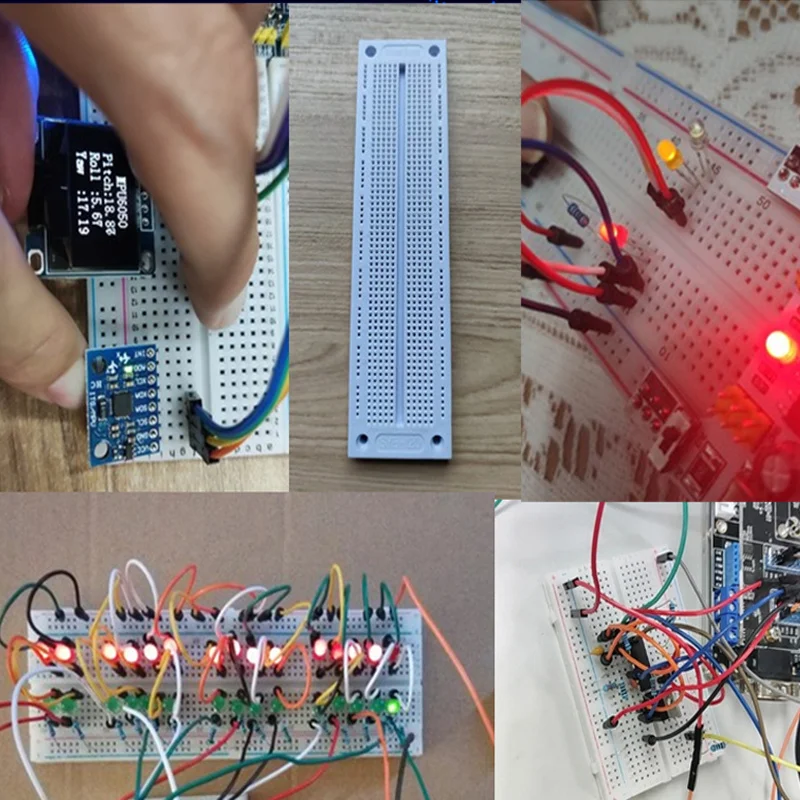

Copy and share this link on social network or send it to your friends
Copy













Please contact us to get latest quotation and revise shipping cost if you want to buy more.
Email: invchips@outlook.com
The translated description would be as follows:
A solderless breadboard (also known as a plugboard or prototyping board) is a tool used for electronic prototyping and circuit building. It has the following characteristics:
1. Reusability: Solderless breadboards typically have a series of holes and metal sockets that allow users to insert electronic components and connect them on the board. This design makes circuit building convenient and flexible, allowing for component rearrangement as needed.
2. Hole arrangement: Usually, the holes on a solderless breadboard are arranged in a standardized grid pattern, such as the common 2.54 millimeter (0.1-inch) spacing. This arrangement allows for direct insertion and connection of commonly used electronic components, such as resistors, capacitors, and integrated circuits.
3. Conductivity: The plug holes on the breadboard are usually connected by conductive metal strips, enabling electrical connections between inserted components. This conductivity allows electronic signals to transmit on the breadboard and provides circuit connectivity
and testing capabilities.
4. Marking indicators: Solderless breadboards often have marking indicators, such as row and column numbers, provided on the edges or main areas to facilitate reference during circuit layout and tracing.
Solderless breadboards are widely used in electronic prototyping, circuit testing, education, and learning. They provide a convenient and quick method for electronics enthusiasts, engineers, and students to build, test, and validate circuit prototypes without the need for soldering or producing dedicated printed circuit boards.


Email: sales@hk-innovo.com
(M-F 08.00 a.m. - 05:00 p.m.)

FOLLOW US
No related record found